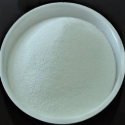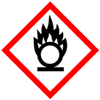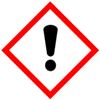 |
Ana Industries P. LTd. |
Strontium Peroxide SDS, Safety Data Sheet or MSDS of Manufacturer Exporter













Strontium Peroxide Specifications of Manufacturer
Strontium Peroxide SDS, Safety Data Sheet
MSDS Sheet, Material Safety Data Sheet
1. Product Identification
Product Name & Other Names: Strontium Peroxide
CAS Number 1314-18-7
EINECS: EC Number: 215-224-6
Molecular Weight: 119.62
Chemical Formula: SrO2
Relevant uses and uses advised against (if any): Industrial Manufacturing
2. Hazards Identification
GHS, Globally Harmonized System Classification in accordance with 29 CFR 1910
Classification according to Regulation (EC) No 1272/2008
Oxidizing liquids; Oxidizing solids Category 2 - H272
Skin irritation Category 2 - H315
Serious eye damage Category 1 - H318
Specific target organ toxicity - single exposure Category 3, Respiratory system - H335
Labeling according Regulation (EC) No 1272/2008
GHS Label Elements  Oxidizing Solid |
GHS Label Elements  Irritant |
Signal Word: Danger
Hazard Statements:
H272: May intensify fire; oxidizer.
H315 Causes skin irritation.
H318 Causes serious eye damage.
H335 May cause respiratory irritation.
Precautionary Statements:
P210: Keep away from heat/sparks/open flames/hot surfaces. - No smoking.
P220: Keep/Store away from clothing/other combustible materials.
P221: Take any precaution to avoid mixing with combustibles.
P260: Do not breathe dust/fume/gas/mist/vapors/spray.
P264: Wash … thoroughly after handling.
P280: Wear protective gloves/protective clothing/eye protection/face protection.
P303+361+353: IF ON SKIN (or hair): Remove/Take off immediately all contaminated clothing. Rinse skin with water/shower.
P305+P351+P338: IF IN EYES: Rinse cautiously with water for several minutes. Remove contact lenses, if present and easy to do. Continue rinsing.
P306 + P360: IF ON CLOTHING: rinse immediately contaminated clothing and skin with plenty of water before removing clothes.
P362: Take off contaminated clothing and wash before reuse.
P337+P313 If eye irritation persists: Get medical advice/ attention.
P405: Store locked up.
P501: Dispose of contents/container to authorized agents only.
Classification according to EU Directives 67/548/EEC or 1999/45/EC
Hazard Symbols:
Xi = Irritant
O = Oxidizer
Risk Phrases:
R 36/37/38 Irritating to eyes, respiratory system and skin.
R 8 Contact with combustible material may cause fire.
3. Composition/Information on Ingredients
Product: Strontium Peroxide
CAS No.: 1314-18-7
EINECS: EC Number: 215-224-6
4. First Aid Measures
Always seek medical attention after first aid measures are provided.
Inhalation: Remove to fresh air. If not breathing, give artificial respiration. If breathing is difficult, give oxygen. Get medical attention.
Ingestion: Never give anything by mouth to an unconscious person. Get medical attention.
Skin Contact: Wipe off excess material from skin then immediately flush skin with plenty of water for at least 15 minutes. Remove contaminated clothing and shoes. Get medical attention. Wash clothing before reuse. Thoroughly clean shoes before reuse.
Eye Contact: Immediately flush eyes with plenty of water for at least 15 minutes, lifting lower and upper eyelids occasionally. Get medical attention immediately.
Note to Physician: Symptomatic and supportive treatment is recommended.
5. Fire Fighting Measures
Flammability of the Product: Non-flammable but it is an oxidizer.
Auto-Ignition Temperature: Not applicable.
Products of Combustion: It emits toxic strontium oxide and oxygen when heated to decomposition.
Fire: It is supporting fire as an oxidizer.
Explosion: Contact with oxidizable substances may cause explosion.
Fire Extinguishing Media: Use water spray, alcohol-resistant foam, dry chemical or carbon dioxide. Use means suitable for extinguishing surrounding fire.
Special Information: In the event of a fire, wear full protective clothing and NIOSH-approved self-contained breathing apparatus with full face piece operated in the pressure demand or other positive pressure mode. At high temperatures or when moistened under fire conditions, it may produce toxic or irritating fumes.
6. Accidental Release Measures
Personal precautions, protective equipment and emergency procedures: Avoid breathing dust/fumes/gas/mist/vapors/spray. Use individual protective equipment (waterproof boots, suitable protective clothing, safety glasses, etc.). Restrict unprotected personnel from the area. Prevent any contact with hot surfaces. Do not approach facing the wind. Do not touch the spilled material.
Environmental precautions: Do not let the product enter drains, soil or water sources.
Methods and materials used for containment Cleanup procedures and Storage:
Small Spill: Avoid contact with skin and eyes. Avoid formation of dust and aerosols. Avoid dust formation. Avoid breathing dust. Ensure adequate ventilation. Use appropriate tools to put the spilled solid in a convenient waste disposal container. Finish cleaning by spreading water on the contaminated surface and dispose of according to local and regional authority requirements.
Large Spill: Do not let the product enter drains. Contain spilled material. Use a shovel to put the material into a convenient waste disposal container. Finish cleaning by spreading water on the contaminated surface and allow evacuating as required by law.
7. Handling and Storage
Precautions for safe handling: Apply according to good manufacturing and industrial hygiene practices. Ensure proper ventilation. In case of insufficient ventilation, wear suitable respiratory equipment. Wash thoroughly after handling. Do not drink, eat or smoke while handling. Avoid contact with skin, eyes and clothing. Minimize dust generation. Avoid breathing dust/fumes/gas/mist/vapors/spray. Avoid contact with eyes, skin, and clothing. Keep container tightly closed. Avoid ingestion and inhalation. Use individual protective equipment (waterproof boots, suitable protective clothing, safety glasses, etc.). Prevent any contact with hot surfaces.
Conditions for safe storage, including any incompatibilities: Store in cool, dry and ventilated area away from heat sources and protected from sunlight in tightly closed original container. Keep air contact to a minimum. Do not leave the material container open. Store protected from heat, sparks and ignition sources and incompatible materials. Avoid contact with skin and eyes. Avoid inhalation of dust/mist/vapor. Do not store with incompatible materials like organic substances, metal powders and reducing agents.
8. Exposure Controls/Personal Protection
Airborne Exposure Limits: None established.
Ventilation System: A system of local and/or general exhaust is recommended to keep employee exposures as low as possible. Local exhaust ventilation is generally preferred because it can control the emissions of the contaminant at its source, preventing dispersion of it into the general work area.
Personal Respirators (NIOSH Approved): For conditions of use where exposure to dust or mist is apparent and engineering controls are not feasible, a particulate respirator may be worn. For emergencies or instances where the exposure levels are not known, use a full-face positive-pressure, air-supplied respirator.
Skin Protection: Wear protective gloves and clean body-covering clothing.
Eye Protection: Use chemical safety goggles and/or full face shield where dusting or splashing of solutions is possible. Maintain eye wash fountain and quick-drench facilities in work area.
Other Control Measures: Maintain good housekeeping in work area. Dust deposits on floors and other surfaces may pick up moisture and cause the surfaces to become slippery and present safety hazards. Handle in accordance with good industrial hygiene and safety practice. Wash hands after handling.
9. Physical and Chemical Properties
Appearance: Off-white crystals or powder or granules.
Odor: None.
Odor threshold: Not available.
pH: Not available.
Relative density: 4.6
Melting Point: 215C (Decomposes)
Initial boiling point and boiling range: Not available.
Flash point: Not available.
Auto-ignition temperature: Not available.
Decomposition temperature: Not available.
Upper/lower flammability or explosive limits: Not available.
Vapor pressure: Not available.
Vapor density: Not available.
Evaporation rate: Not available.
Flammability (solid, gas): Not available.
Partition coefficient: n-octanol/water: Not available.
Solubility(ies): Not available.
Viscosity: Not available.
Molecular Weight: 119.62
Chemical Formula: SrO2
10. Stability and Reactivity
Stability: It is stable under recommended conditions of use and storage.
Hazardous Decomposition Products: It emits strontium oxides and oxygen when heated to decomposition.
Hazardous Polymerization: Will not occur.
Incompatibilities: Organic substances, Metal powders and Reducing agents.
Conditions to Avoid: Incompatibles moisture and heat.
11. Toxicological Information
Toxicity to Animals: Not available.
Carcinogenicity: No component of this product present at levels greater than or equal to 0.1% is identified as probable or confirmed human carcinogen by IARC, ACGIH, OSHA and NTP.
Mutagenic Effects: Not available.
Teratogenic Effects: Not available.
Developmental Toxicity: Not available.
12. Ecological Information
BOD5 and COD: Not available.
Toxicity: Not available.
Results of PBT and vPvB assessment: This substance/mixture contains no components considered to be either persistent, bioaccumulative and toxic (PBT), or very persistent and very bioaccumulative (vPvB) at levels of 0.1% or higher.
13. Disposal Considerations
Whatever cannot be saved for recovery or recycling should be managed in an appropriate and approved waste disposal facility. Processing, use or contamination of this product may change the waste management options. State and local disposal regulations may differ from federal disposal regulations. Dispose of container and unused contents in accordance with federal, state and local requirements. Small amounts of this material may be suitable for sanitary sewer or trash disposal.
14. Transport Information
DOT (USA)
UN number: 1509 Class: 5.1 Packing group: II
Proper shipping name: Strontium Peroxide
IMDG
UN number: 1509 Class: 5.1 Packing group: II
Proper shipping name: Strontium Peroxide
IATA
UN number: 1509 Class: 5.1 Packing group: II
Proper shipping name: Strontium Peroxide
15. Regulatory Information
USA:
SARA 311/312 Hazards: Acute Health Hazard, Chronic Health Hazard, Reactivity Hazard.
Section 16 - Additional Information
DISCLAIMER: The information and recommendations set forth herein (hereinafter "Information") are presented in good faith and believed correct as of the date hereof. It is compiled from various sources and it is not necessarily all inclusive nor fully adequate in every circumstance. In addition, these suggestions should not be confused with nor followed in violation of applicable laws, regulations, rules or insurance requirements applicable. This MSDS sheet is intended only as a guide to the appropriate precautionary handling of the material by a properly trained person using this product. Individuals receiving the information must exercise their independent judgment in determining its appropriateness for a particular purpose.
Contact Strontium Peroxide Manufacturers Suppliers Exporters:
Ana Industries P. LTd.
email: info@anaindustries.org
Call:
+912223774610
Houston USA, Dubai UAE Dahej & Mumbai India.

